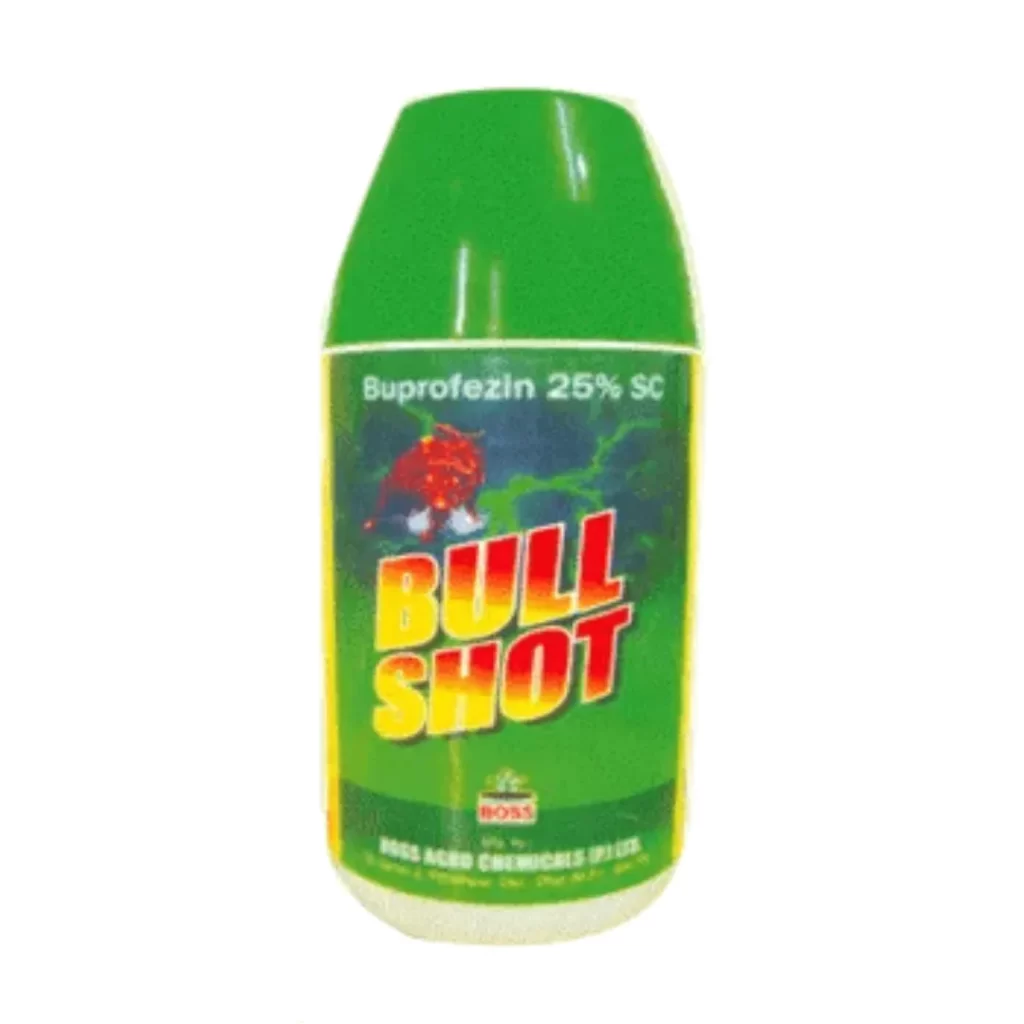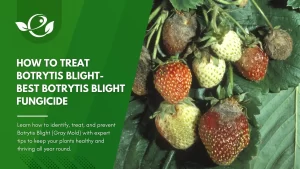Table of Contents
Thrips are among the most unwelcome yet incredibly resilient pests in any garden or agricultural setting. These tiny, winged insects may be small, but the damage they inflict on plants is significant, often leaving leaves scarred, discolored, and prone to disease. Their presence is a constant threat to plant health, from lush ornamental gardens to expansive crop fields. Thrips pierce the plant tissue, suck out sap, and spread diseases like Tomato Spotted Wilt Virus, causing widespread damage and stunting growth. Combatting these persistent pests requires understanding their biology, lifecycle, and the most effective treatment methods.
In the quest to protect your plants, insecticides can be valuable allies in controlling thrip populations. However, with countless options available, choosing the right one can be daunting. From organic choices like neem oil to more potent options like imidacloprid, each insecticide has unique benefits and considerations. This guide will cover the top ten insecticides for effectively managing thrips, along with essential tips for application, preventive measures, and an integrated pest management approach that minimizes environmental impact. Here, you’ll find everything you need to keep your garden or crops free from thrip damage.
Identifying Thrip Infestations
Physical Characteristics of Thrips

Thrips are minute insects, generally measuring around 1 to 2 millimeters in length. Depending on the species, they can range in color from yellow and brown to nearly black. Their slender bodies and fringed wings, though small, are visible upon close inspection. When disturbed, they tend to move quickly, often hiding under leaves or within flower petals.
Signs of Thrip Damage
Identifying a thrip infestation requires attention to subtle clues, as these pests feed by puncturing plant tissues and sucking out sap. Signs include:
- Stippling on Leaves: Leaves may exhibit tiny white or silver specks, a result of thrips feeding on plant cells.
- Black Spots on Leaves: Thrips leave behind tiny black specks, which is their excrement.
- Distorted Growth: Infested plants may show curled or stunted growth due to continuous feeding.
- Flower Discoloration: Flowers attacked by thrips may fail to bloom or exhibit discoloration.



Affected Plants
Thrips are highly adaptable and can infest a wide variety of plants, including both ornamental and edible types. Roses, tomatoes, cucumbers, peppers, and various fruit trees are commonly affected. Thrips are especially problematic in greenhouses, where conditions are ideal for their reproduction.
Lifecycle and Behavior of Thrips
Lifecycle Stages
Thrips have a complex lifecycle comprising multiple stages, from eggs to nymphs to adults. Understanding their lifecycle helps in targeting control efforts effectively:
- Eggs: Laid within plant tissue, making them invisible to the naked eye.
- Nymphs: Feed on plants immediately upon hatching and cause the most visible damage.
- Pupal Stage: Typically occurs in the soil, where they undergo transformation into adults.
- Adults: Lay eggs, continuing the cycle of infestation.
Behavior and Habitat
Thrips are most active during warm, dry weather. They thrive in enclosed environments like greenhouses and densely planted areas where airflow is limited. As their lifecycle is relatively short, with multiple generations each season, controlling thrip populations is essential to prevent an infestation from spiraling out of control.
Why It’s Important to Control Thrips
Thrips cause damage beyond mere aesthetic issues. They weaken plants, impact crop yields, and, worst of all, are vectors for dangerous viral diseases. For instance, Tomato Spotted Wilt Virus (TSWV) and Impatiens Necrotic Spot Virus (INSV) are both spread by thrips. These viruses can wipe out entire crops and severely impact yields, making thrip control crucial for both hobbyist gardeners and commercial growers.
Moreover, prolonged exposure to insecticides can make thrips resistant, so effective pest control requires a mix of chemical and natural treatments. Integrated Pest Management (IPM) is essential for sustainable thrip control, reducing dependency on chemical treatments and protecting beneficial insects and overall plant health.
Top 10 Insecticides for Thrips Control
When selecting an insecticide, consider the safety of beneficial insects, the ease of application, and the environmental impact. Below are ten insecticides that provide effective thrip control:
1. Spinosad
Spinosad is a naturally occurring insecticide derived from a soil bacterium. It targets thrips by disrupting their nervous systems upon contact or ingestion.
- Benefits: Safe for beneficial insects when applied selectively; effective against nymph and adult thrips.
- Application Tips: Use as a foliar spray in the morning or evening when thrips are most active. Reapply every 7-10 days for severe infestations.
2. Neem Oil
Neem oil is an organic, broad-spectrum insecticide that acts by inhibiting feeding and reproduction in pests, including thrips. It’s safe for many beneficial insects and helps reduce pest populations without environmental damage.
- Benefits: Natural, biodegradable, and compatible with most plants.
- Application Tips: Apply neem oil weekly for ongoing control. Avoid using it in full sun to prevent plant burn.
3. Insecticidal Soaps
Insecticidal soaps disrupt thrip cell membranes, leading to dehydration. These soaps are effective for light to moderate infestations and are safe for beneficial insects when used correctly.
- Benefits: Eco-friendly and safe for edible plants.
- Application Tips: Apply thoroughly to plant leaves, especially on the undersides where thrips hide. Reapply every 5-7 days as needed.
4. Pyrethrin
Pyrethrin is a natural insecticide extracted from chrysanthemum flowers. It quickly kills thrips on contact, making it ideal for quick knockdown.
- Benefits: Provides rapid results with minimal residual impact.
- Application Tips: Use in low-light conditions to avoid harming pollinators. Follow label instructions to avoid over-application.
5. Azadirachtin-Based Products
Azadirachtin, the active component in neem oil, is available in concentrated forms for more powerful control. It disrupts thrip hormones, preventing growth and reproduction.
- Benefits: Highly effective in IPM; reduces resistance risk.
- Application Tips: Apply bi-weekly for persistent infestations. Avoid high temperatures during application.
6. Horticultural Oils
These oils smother thrips by creating a thin film on the plant, cutting off oxygen. They’re particularly effective on the egg and nymph stages.
- Benefits: Safe for most plants and reduces thrip populations quickly.
- Application Tips: Apply in cooler weather to prevent leaf burn. Use on dormant plants in the winter for added effectiveness.
7. Acephate
Acephate is a systemic insecticide that kills thrips upon ingestion. It’s potent and widely used for severe infestations but should be applied carefully to avoid harming non-target species.
- Benefits: Provides long-lasting control.
- Application Tips: Apply only as needed and follow safety guidelines due to its toxicity.
8. Imidacloprid
Imidacloprid is a systemic insecticide that’s highly effective against thrips and works for extended periods. It’s commonly used for high-value crops but requires caution around pollinators.
- Benefits: Long-lasting; suitable for both greenhouse and field applications.
- Application Tips: Apply to soil around plant roots to minimize contact with pollinators.
9. Abamectin
Abamectin is derived from soil bacteria and acts as a miticide and insecticide. It’s useful for controlling resistant thrips but should be used sparingly to prevent environmental buildup.
- Benefits: Effective against resistant thrips.
- Application Tips: Apply as a foliar spray. Repeat applications if necessary but follow a strict rotation schedule.
10. Beauveria bassiana (Biological Control)
Beauveria bassiana is a naturally occurring fungus that infects and kills thrips upon contact. It’s safe for beneficial insects and works well in integrated pest management.
- Benefits: Non-toxic to beneficials, ideal for IPM.
- Application Tips: Use in cooler, shaded areas to encourage fungal growth. Reapply periodically for lasting effects.
Organic Control of Thrips
Some biological control measures have been developed for specific thrips. The insecticide spinosad is generally more effective against thrips than any of the chemical or other biological formulations. It lasts 1 week or more and moves short distances into sprayed tissue. It can, however, be toxic to certain natural enemies (e.g., predatory mites, syrphid fly larvae) and bees. Therefore, do not apply spinosad to plants that are flowering. In the case of flower infestation, a combination of garlic extracts with some insecticides also seems to work well.
For species that attack the leaves and not the flower, try neem oil or natural pyrethrins, especially on the undersides of the leaves. The use of highly reflective UV mulch (metalized reflective mulch) has been recommended.
Chemical Control of Thrips
Always consider an integrated approach with preventive measures together with biological treatments if available. Due to the high reproductive rates and their life cycles, thrips have developed resistance to different classes of pesticides. Effective contact insecticides include fipronil, imidacloprid, or acetamiprid, which in many products are combined with piperonyl butoxide to enhance their effect.
Select and apply ONLY ONE of the following products to your crops:

Confidor by Bayer
- Chemical compound: Imidacloprid 17.8% SL
- Type: Systemic Insecticide
- Mode of Action: 4A – Imidacloprid acts by interfering with the transmission of impulses in the nerve system of insects. It acts by exciting certain nerve cells acting on a receptor protein.
- Dosage: 7.5-10 ml mixed in 20 l water
- Crops: Cotton, Chilli, Sugarcane, Mango

Admire by Bayer
- Chemical compound: Imidacloprid 70.0% WG
- Type: Systemic Insecticide
- Mode of Action: 4A – Antagonist to the nicotinic acetyl choline receptor in the central nervous system, Imidacloprid disturbs the proper signal transmission system leading to excitation of nerve cell and consequently a disorder of the nervous system leading finally to the death of the treated insect.
- Dosage: 150 g/ha
- Crops: Cotton, Rice, Okra, Cucumber

Furadan 3G by Crystal
- Chemical compound: Carbofuran 3.0% CG
- Type: Broad-spectrum Insecticide and Nematicide
- Mode of Action: 1A – absorbed through the insects cuticle (skin) or spiracles (respiratory openings)
- Dosage: 12.5 kg/ha
- Crops: Sugarcane
- Always refer to the product labels and accompanying leaflets for complete product details and safety measures.

Regent SC by Bayer
- Chemical compound: Fipronil 5.0% SC
- Type: Insecticide
- Mode of Action: 2B – Primarily acts as an ingestion toxicant with some complimentary contact action. It also acts by interfering in nerve impulse transmission.
- Dosage: 1.5 ml/l of water to 2 ml/l of water
- Crops: Rice, Chilli, Cabbage, Sugarcane, Cotton

Bull Shot Boss Agro Pvt. Ltd.
- Chemical compound: Buprofezin 25.0% SC
- Type: Broad-spectrum Insecticide and Insect Growth Regulator
- Mode of Action: Inhibits chitin formation there by causing abnormal endocuticular deposition and abortive molting
- Dosage: 2-5 ml/l of water
- Crops: Rice, Cotton, Chilli, Mango, Grapes

Pegasus by Syngenta
- Chemical compound: Diafenthiuron 50.0% WP
- Type: Broad-spectrum Insecticide
- Mode of Action: 12A – the active ingredient of pegasus 500sc is chemically a Thiourea.
- Dosage: 0.8-1.0 l/ha – low rate for whiteflies and high rate for mites
- Crops: Cabbage, Broccoli, Cauliflower, Rose
- Way of Application: Foliar Spray
Tips for Safe and Effective Insecticide Application
For insecticide use to be safe and effective, follow these guidelines:
- Follow the Label: Always adhere to the manufacturer’s instructions for dosage, timing, and protective measures.
- Avoid High-Temperature Applications: Insecticides can cause plant damage in hot weather.
- Rotate Insecticides: Prevent thrips from developing resistance by rotating among different modes of action.
Alternative and Preventive Measures for Thrip Control
- Plant resistant varieties.
- Use virus- and thrips-free transplants from certified greenhouses and plant nurseries.
- Avoid planting susceptible plants next to weedy areas and alternative hosts.
- Add plastic or organic mulch along the rows to reduce the incidence and progression of thrips.
- Monitor fields regularly.
- Use sticky traps over a large area for mass-catching.
- Prune by cutting plants just above branching points and nodes instead of shearing off terminals.
- Keep plants well irrigated, and avoid excessive applications of nitrogen fertilizer.
- Remove infected plants and any plant debris and destroy them.
Conclusion
Thrips are a formidable pest, but by combining insecticides with preventive measures, you can keep them in check. From organic solutions like neem oil to advanced insecticides like imidacloprid, each method has its place in a balanced, integrated pest management strategy. By understanding thrip biology, using insecticides responsibly, and maintaining preventive practices, you can protect your plants and achieve healthier, more productive growth.








